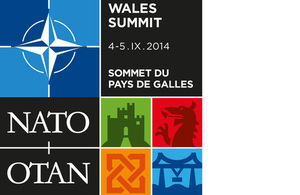Will NATO Protect All Members Equally?
Posted on

“One for all, all for one”: That’s a central principle of the NATO alliance — but in recent months, multiple members have wondered whether it truly applies to them. With Russia escalating the Ukrainian conflict every day and the alliance’s annual summit starting Thursday, the question of equality among the 28 member states is painfully timely.

The Baltic states and Poland in particular have in the past few months asked for “additional security guarantees.” These countries want to be certain that in the case of military aggression that other NATO countries will support them – even in the face of deniable cyber and guerrilla attacks that let an aggressor hide behind proxies and blur traditional lines between peace and war. German Chancellor Angela Merkel and President Barack Obama have emphasized publicly that NATO commitments do not solely exist on paper; the Wales summit will reportedly ratify an earlier declaration that cyberwarfare could constitute an “armed attack” under the Atlantic Treaty; and yesterday news broke that NATO would create a (modest) “rapid reaction” force of 4,000 troops to protect its eastern members. Nevertheless, suspicion is in the air in the alliance.
Especially in Poland, there has been discussion about what each member state’s commitment under Article Five to aid a victimized ally with “action as it deems necessary” means in reality. Would, for instance, the United Kingdom be willing to send its elite troops to Poland? Would the United States uncover its hidden offensive cyber capabilities in order to guarantee Latvia’s security?
Military bases, specifically American military bases, built on one’s own territory have long been perceived as an additional security guarantee. There is a strong belief, both in the Baltics and Poland, that the United States is more committed to defend an ally which hosts its troops. So, even though in the past months NATO has increased its military exercises, almost tripled the number of its fighters in the Baltics, and increased naval patrols in the Baltic Sea, there’s a lively discussion within NATO about opening new military bases. The Defense Minister of Poland recently asked the United States to place 10,000 American soldiers in Poland. Meanwhile in Germany, however, according to a recent poll, 74 percent of Germans object to the establishment of standing NATO bases in the Baltics and Poland – who in the current situation see themselves being treated as second-class citizens.
On the flipside, Estonian President Toomas Hendrik Ilves tweeted last week that, to his mind, the true “second-class members” within NATO are those who refuse to spend two percent of their GDP on defense. For the past year, the main message of the outgoing NATO Secretary General has been to press the European member states to meet this recommendation. It is also a question of Article Three of the North Atlantic Treaty, which states that the parties “will maintain and develop their individual and collective capacity to resist armed attack.” In 2013, only four member states hit the two percent line: the United States, the United Kingdom, Greece, and Estonia, who in this respect can be counted as “first-class NATO members.”
Is it be possible that NATO as an alliance would fail to defend a member state in a crisis? The answer is clear: this will not happen. If, for example, Estonia faced a military attack and NATO did not react to this with strong enough measures, it would mean the end of the alliance’s political credibility as well as its history as a military alliance. It would also be very difficult for the United States to create or maintain credible security guarantees with any of its allies anymore. This would create a situation on the chessboard of the world politics which China in particular would observe with great interest.
Yet there is a more immediate question: In practice, with what resources and how quickly other NATO members would support their victimized ally? Which members’ calls for help might elicit more of a response than others’?
There are four ways in which each NATO member state can best try to guarantee the certainty of support, its swiftness and sufficiency:
- By demonstrating both will and capability to defend others, especially during difficult times;
- By sufficiently looking after its own defensive capability and meeting the two percent recommendation;
- By developing the national capabilities on which the operations of the entire alliance depend;
- By being an active and cooperative NATO member which works to strengthen the cohesion of the alliance.

Jarno Limnéll
The NATO summit held in Wales this week is the last summit before the alliance’s active military operations end in Afghanistan and the first summit after the shift in the security situation in Europe. The communiqué of the summit will emphasize the most important task of the alliance: collective territorial defense, which builds on credible physical and cyber defense capabilities against an attack or a threat thereof to any of its member states – any member, without division into first- and second-class citizens. This discussion will hardly end when the summiteers go home, but it is one they have to have.
Jarno Limnéll (@JarnoLim) is director of cyber security at McAfee and Professor of Cyber Security at Aalto University in Helsinki. The views expressed here are his own.
Subscribe to our newsletter
Promotions, new products and sales. Directly to your inbox.
